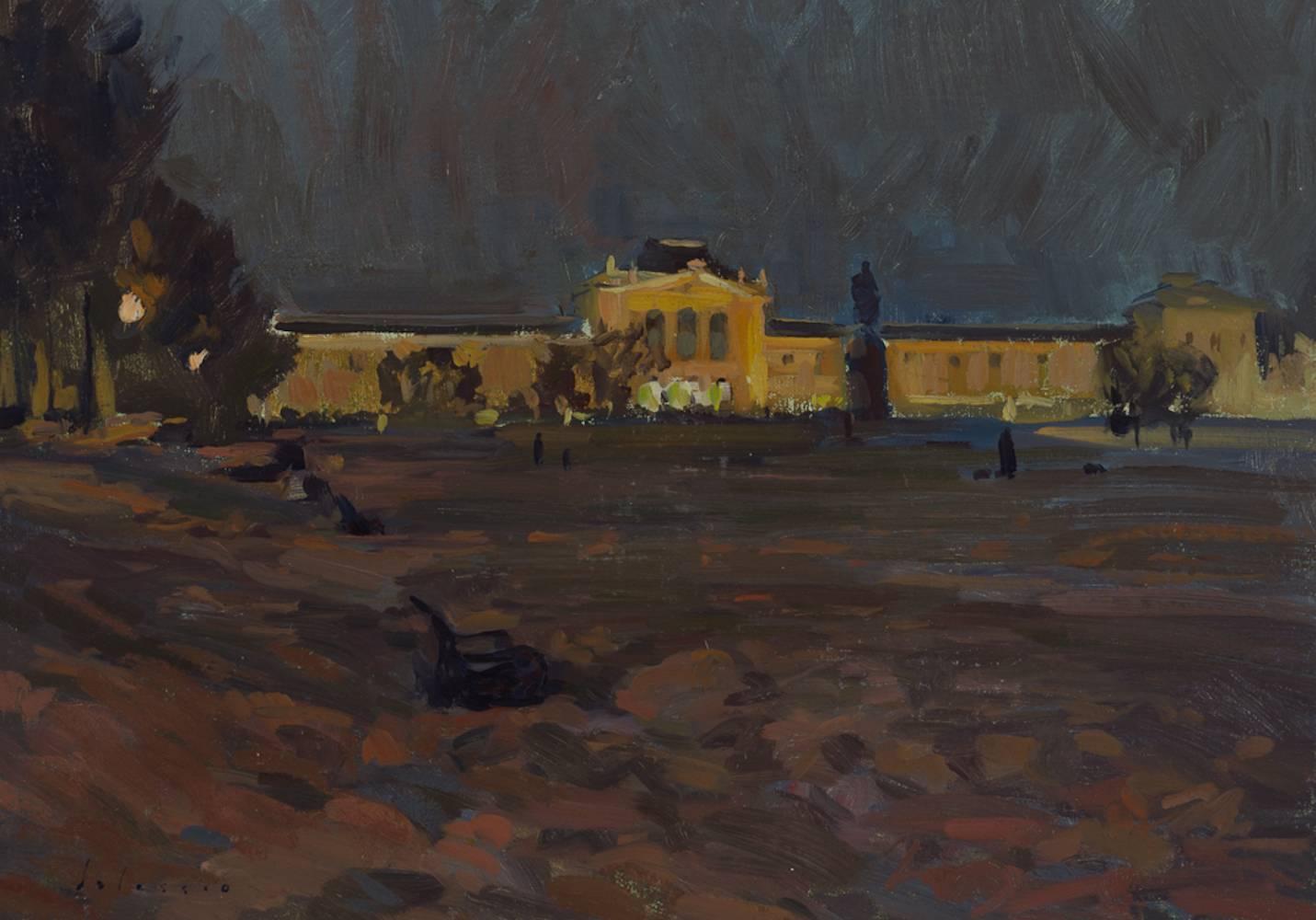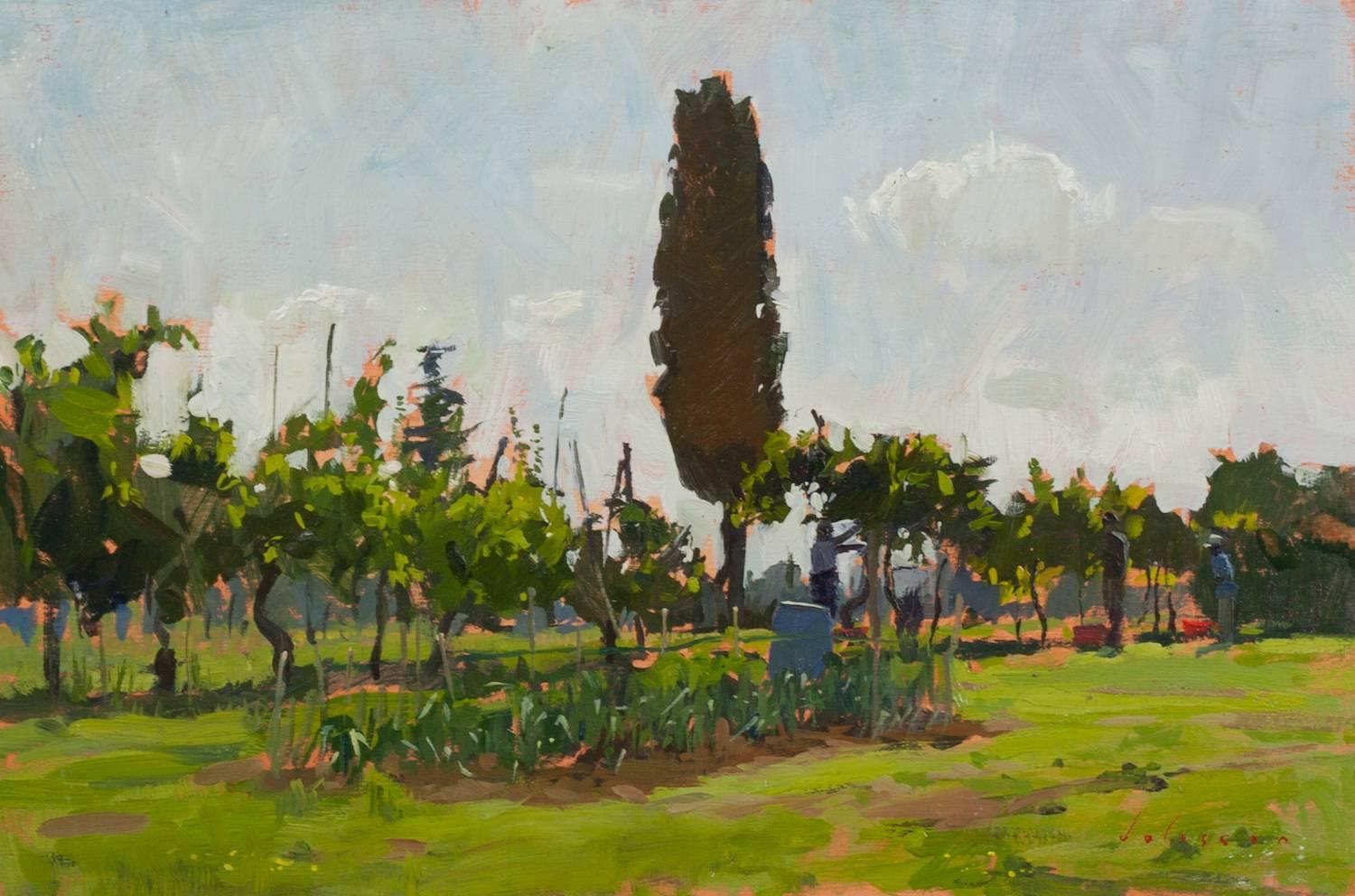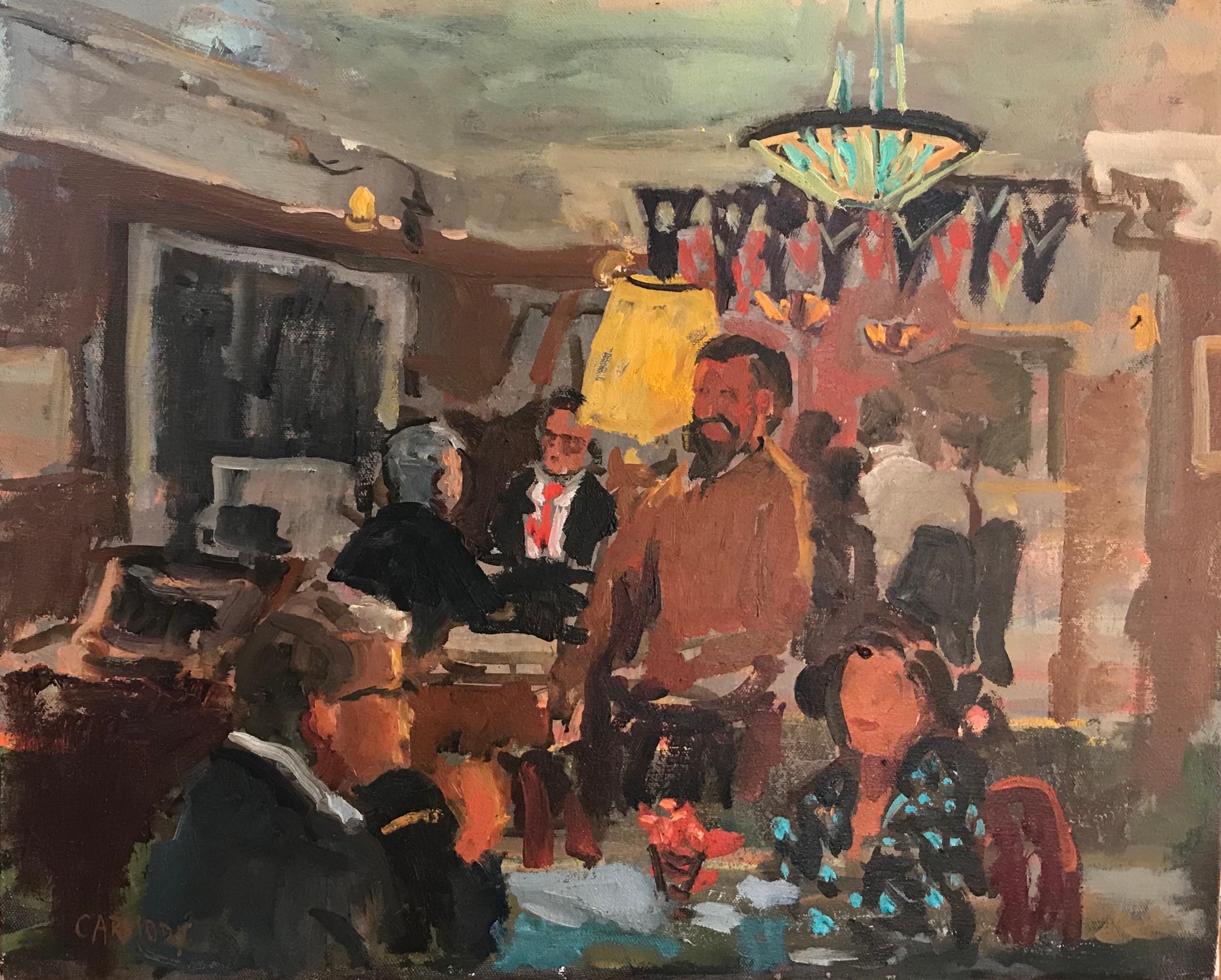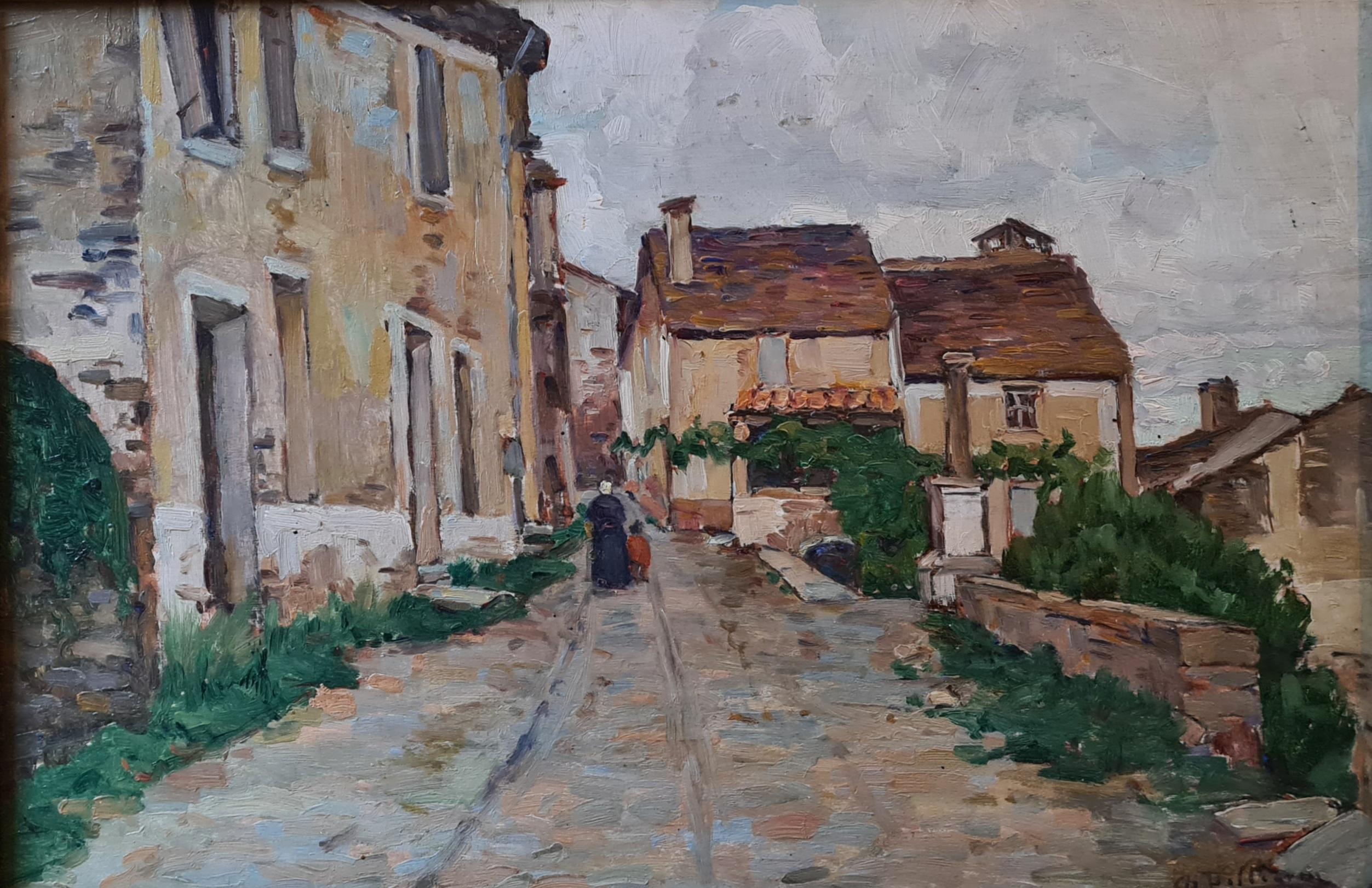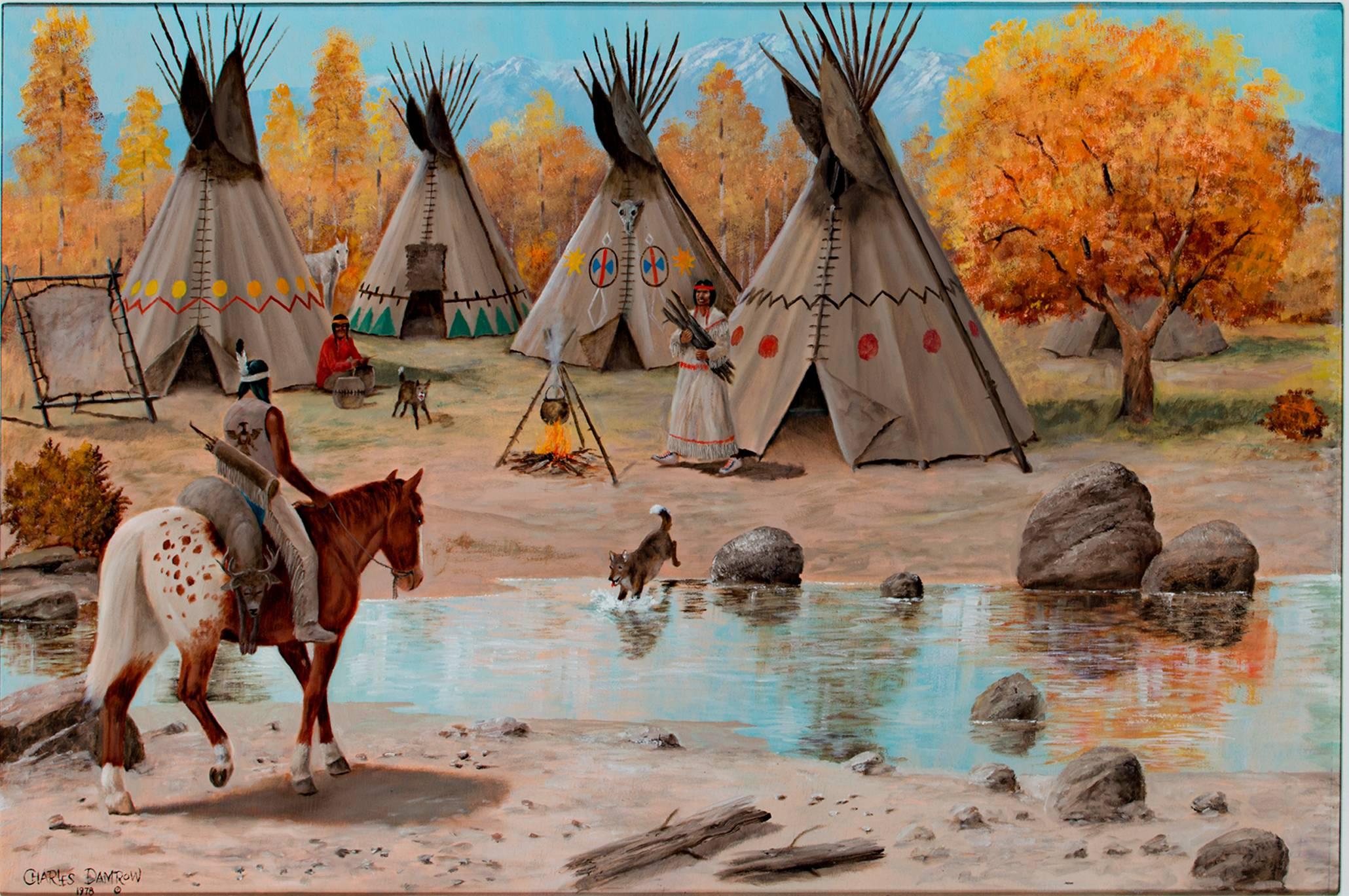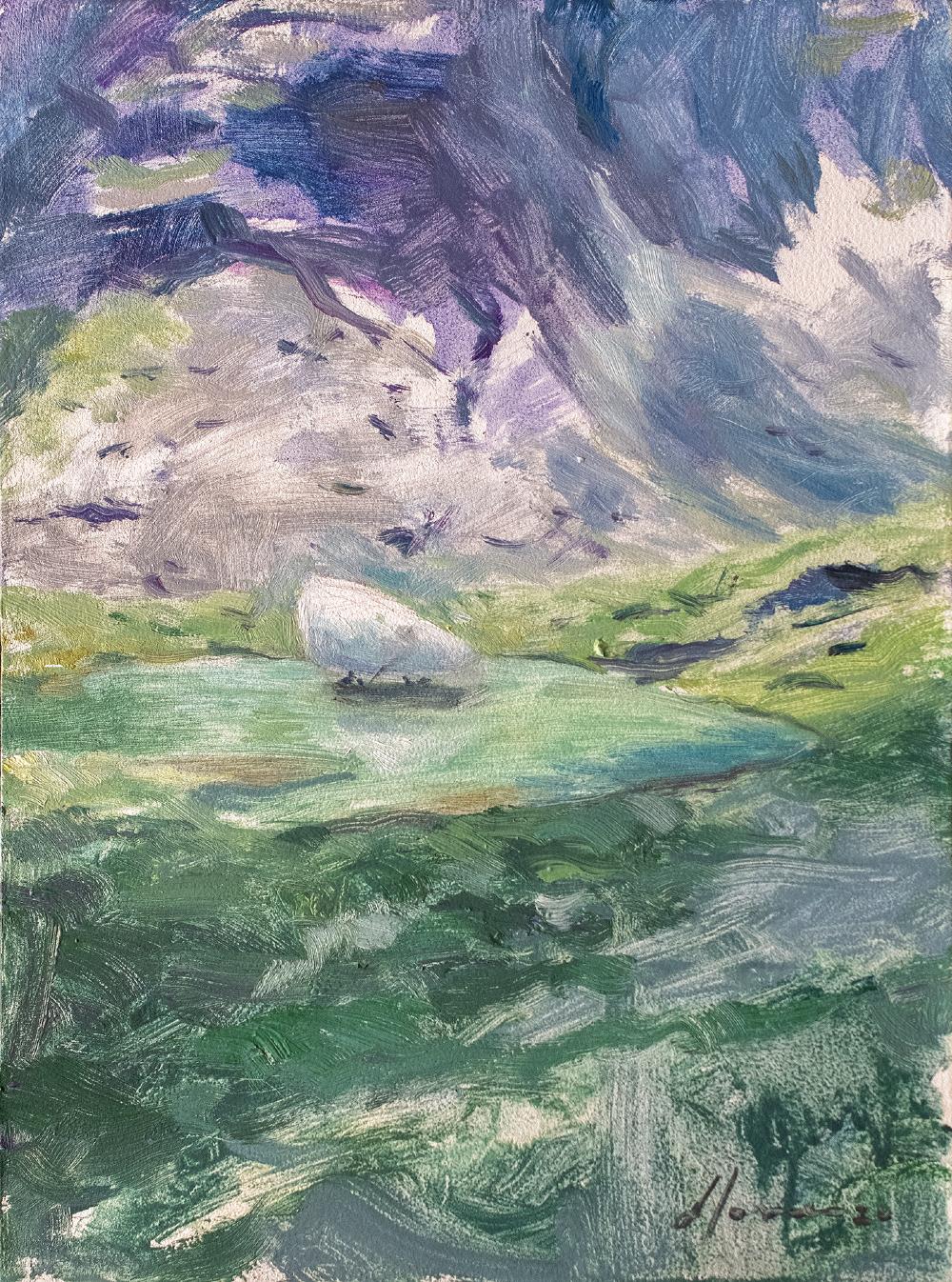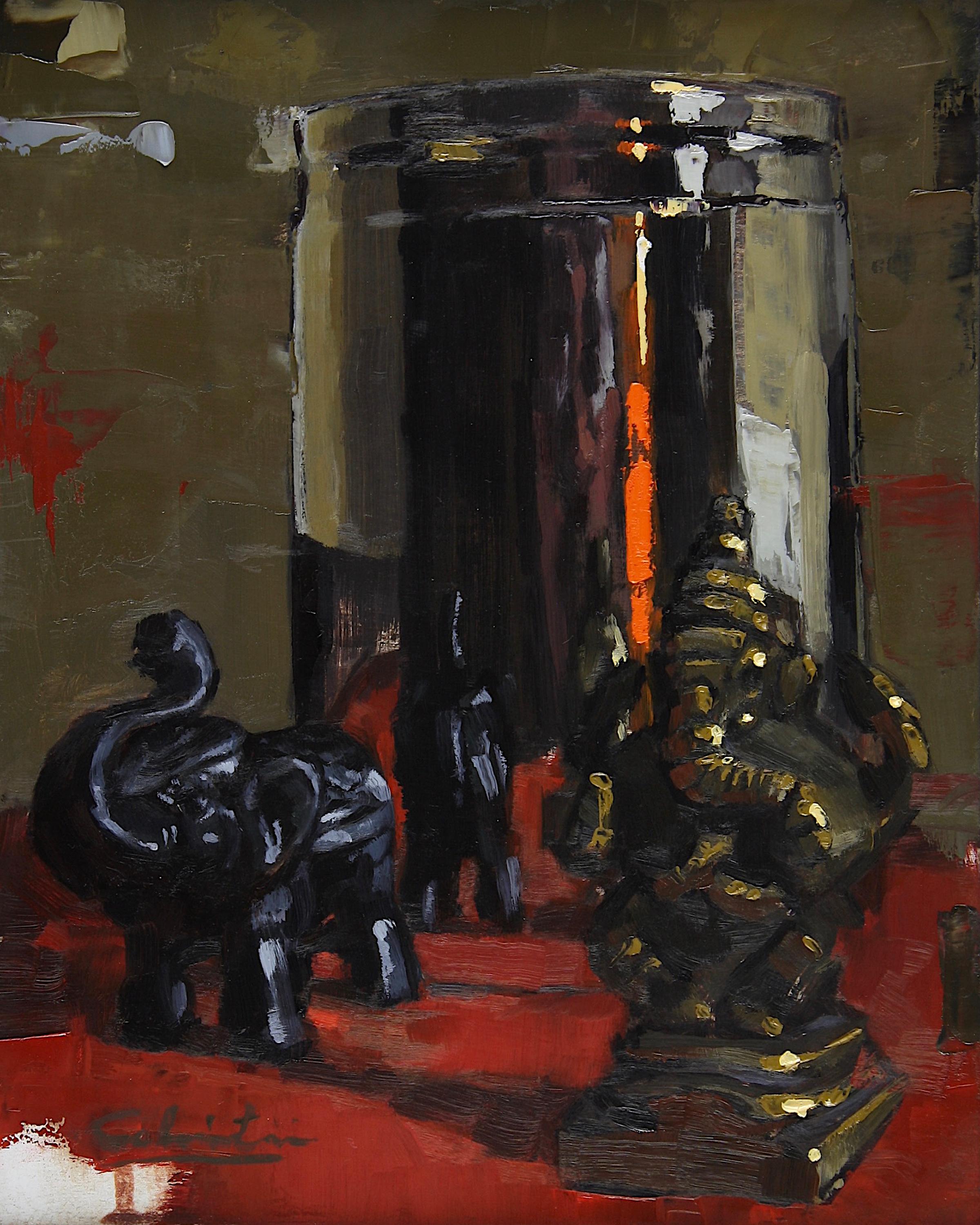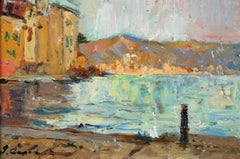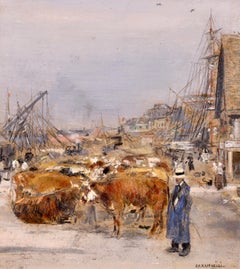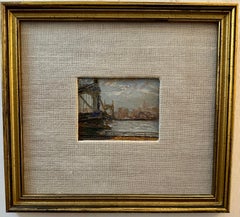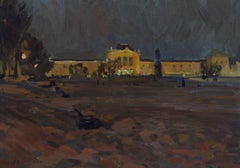
"The Adoration of the Magi" Monticelli C.19th French Pre-Impressionist Religious
Want more images or videos?
Request additional images or videos from the seller
1 of 8
Adolphe Monticelli"The Adoration of the Magi" Monticelli C.19th French Pre-Impressionist Religiousc.1870
c.1870
About the Item
- Creator:Adolphe Monticelli (1824 - 1886, French)
- Creation Year:c.1870
- Dimensions:Height: 13 in (33.02 cm)Width: 9 in (22.86 cm)
- Medium:
- Movement & Style:
- Period:
- Condition:Very good condition.
- Gallery Location:Marlow, GB
- Reference Number:1stDibs: LU41533395731
About the Seller
5.0
Platinum Seller
These expertly vetted sellers are 1stDibs' most experienced sellers and are rated highest by our customers.
Established in 2001
1stDibs seller since 2016
675 sales on 1stDibs
Typical response time: 2 hours
More From This SellerView All
- Le quai de Martigues - Impressionist Landscape Oil by Georges LapchineBy Georges LapchineLocated in Marlow, BuckinghamshireSigned oil on board landscape circa 1930 by Russian impressionist painter Georges Lapchin. The work depicts a view of the quai at Martigues in the South of France. To the left of the...Category
1930s Impressionist Landscape Paintings
MaterialsOil, Panel
- Dancer at the Opera - Impressionist Portrait Oil Painting by Norbert GoeneutteBy Norbert GoeneutteLocated in Marlow, BuckinghamshireSigned, titled and dated figurative oil on panel by French impressionist painter Norbert Goeneutte. The work depicts an elegant seated dancer getting dressed. She is wearing a dress with a black corset trimmed with yellow flowers around the bust and a white tuile skirt. A yellow flower contrasts against her dark hair. Signature: Signed upper right and titled and dated 1886 verso Dimensions: Framed: 9"x7" Unframed: 8"x6" Provenance: Private French collection Goeneutte studied under Pils and exhibited at the Salon from 1876 onwards. He was one of the organisers of the painter/engraver exhibitions ( Expositions des Peintres-Graveurs). His principal preoccupation lay in capturing scenes from everyday life in Paris, portraying its citizens and, above all, the women of the city. There is a discernible influence of Raffaëlli, although Goeneutte lacks the latter's expressive intensity. Examples of his work include Classroom, Boulevard de Clichy in the Snow, Arrival of the Wedding Party...Category
1880s Impressionist Portrait Paintings
MaterialsPanel, Oil
- L'embarquement de boeufs - Impressionist Oil, Cattle by Jean Francois RaffaelliBy Jean-Francois RaffaelliLocated in Marlow, BuckinghamshireWonderful signed oil on panel cattle and figures in landscape by French impressionist painter Jean-Francois Raffaelli. The work depicts oxen being loaded onto ships in Honfleur, France en route to England. Signature: Signed lower right Dimensions: Framed: 18"x16" Unframed: 9"x8" Provenance: Exhibition Jean Francois Raffaélli held at Galerie Simonson, 19 Rue Caumartin Paris - October 1929 (number 44) Jean-François Raffaëlli's father was a failed Italian businessman and Raffaëlli himself was, among other things, a church chorister, actor and theatre singer. He then studied under Gérôme at the École des Beaux-Arts in Paris. He travelled to Italy, Spain and Algeria and on his return to France settled in Asnières. In 1876, on a trip to Brittany, he first saw the potential of realist subject matter, if treated seriously. He became involved in meetings of artists at the Café Guerbois, where the Impressionist painters used to gather. As a result, Degas, contrary to the advice of the group, introduced Raffaëlli to the Impressionist exhibitions - according to one uncertain source as early as the very first exhibition, at the home of Nadar, and certainly to those of 1880 and 1881. In 1904, Raffaëlli founded the Society for Original Colour Engraving. He first exhibited at the Salon de Paris in 1870 and continued to exhibit there until he joined the Salon des Artistes Français in 1881, where he earned a commendation in 1885, was made Chevalier of the Légion d'Honneur in 1889 and in the same year was awarded a gold medal at the Exposition Universelle. In 1906 he was made Officier of the Légion d'Honneur. He was also a member of the Société Nationale des Beaux-Arts. In 1884, a private exhibition of his work cemented his reputation. He contributed to several newspapers such as The Black Cat (Le Chat Noir) in 1885 and The French Mail (Le Courrier Français) in 1886 and 1887. He published a collection entitled Parisian Characters, which captured his favourite themes of the street, the neighbourhood and local people going about their lives. In 1880 he participated, with Forain, on the illustration of Joris Karl Huysmans' Parisian Sketches (Croquis Parisiens). He also illustrated Huysman's Works. As well as working as an illustrator, he also made etchings and coloured dry-points. His early attempts at painting were genre scenes, but once he was settled in Asnières he started to paint picturesque views of Parisian suburbs. From 1879 onwards, his subject matter drew on the lives of local people. These popular themes, which he treated with humanity and a social conscience, brought him to the attention of the social realist writers of the time such as Émile Zola. In addition to his realist style, Raffaëlli's dark palette, which ran contrary to the Impressionist aesthethic, helped to explain the opposition of those painters to his participation in their exhibitions. More concerned with drawing than colour, he used black and white for most of his paintings. Towards the end of his life, he lightened his palette, but without adopting any other principles of the Impressionist technique. After painting several portraits, including Edmond de Goncourt and Georges Clémenceau, he returned to genre painting, particularly scenes of bourgeois life. Later in his career, he painted mainly Breton-inspired sailors and views of Venice. His views of the Paris slums and the fortifications, sites which have almost completely disappeared, went some way towards establishing a genre in themselves and perpetuated the memory of the area: The Slums, Rag-and-Bone Man, Vagabond, Sandpit, In St-Denis, Area of Fortifications. His realistic and witty portrayal of typical Parisian townscapes accounts for his enduring appeal. Born in Paris, he was of Tuscan descent through his paternal grandparents. He showed an interest in music and theatre before becoming a painter in 1870. One of his landscape paintings was accepted for exhibition at the Salon in that same year. In October 1871 he began three months of study under Jean-Léon Gérôme at the École des Beaux-Arts in Paris; he had no other formal training. Raffaëlli produced primarily costume pictures until 1876, when he began to depict the people of his time—particularly peasants, workers, and ragpickers seen in the suburbs of Paris—in a realistic style. His new work was championed by influential critics such as J.-K. Huysmans, as well as by Edgar Degas. The ragpicker became for Raffaëlli a symbol of the alienation of the individual in modern society. Art historian Barbara S. Fields has written of Raffaëlli's interest in the positivist philosophy of Hippolyte-Adolphe Taine, which led him to articulate a theory of realism that he christened caractérisme. He hoped to set himself apart from those unthinking, so-called realist artists whose art provided the viewer with only a literal depiction of nature. His careful observation of man in his milieu paralleled the anti-aesthetic, anti-romantic approach of the literary Naturalists, such as Zola and Huysmans. Degas invited Raffaëlli to participate in the Impressionist exhibitions of 1880 and 1881, an action that bitterly divided the group; not only was Raffaëlli not an Impressionist, but he threatened to dominate the 1880 exhibition with his outsized display of 37 works. Monet, resentful of Degas's insistence on expanding the Impressionist exhibitions by including several realists, chose not to exhibit, complaining, "The little chapel has become a commonplace school which opens its doors to the first dauber to come along."An example of Raffaëlli's work from this period is Les buveurs d'absinthe (1881, in the California Palace of Legion of Honor Art Museum in San Francisco). Originally titled Les déclassés, the painting was widely praised at the 1881 exhibit. After winning the Légion d'honneur in 1889, Raffaëlli shifted his attention from the suburbs of Paris to city itself, and the street scenes that resulted were well received by the public and the critics. He made a number of sculptures, but these are known today only through photographs.[2] His work was also part of the painting event in the art competition at the 1912 Summer Olympics. In the later years of his life, he concentrated on color printmaking. Raffaëlli died in Paris on February 11, 1924 Museum and Gallery Holdings: Béziers: Peasants Going to Town Bordeaux: Bohemians at a Café Boston: Notre-Dame; Return from the Market Brussels: Chevet of Notre-Dame; pastel Bucharest (Muz. National de Arta al României): Market at Antibes; Pied-à-terre Copenhagen: Fishermen on the Beach Douai: Return from the Market; Blacksmiths Liège: Absinthe Drinker...Category
1880s Impressionist Animal Paintings
MaterialsOil, Panel
- Joyeux Pierrot - Impressionist Oil, Portrait by Armand Francois HenrionBy Armand (François Joseph) HenrionLocated in Marlow, BuckinghamshireSigned impressionist oil on panel portrait circa 1910 by French painter Armand Francois Henrion. The work depicts a happy, smiling Pierrot - a French clown - with his face painted white wearing white ruffles and a mint green hat. Signature: Signed lower right Dimensions: Framed: 9"x7.5" Unframed: 7"x5.5" Provenance: Private French collection Armand François Joseph Henrion...Category
1910s Impressionist Portrait Paintings
MaterialsOil, Panel
- Winter on the Canal - Douai - Impressionist Landscape Oil Painting - Henri DuhemBy Henri DuhemLocated in Marlow, BuckinghamshireSigned and dated oil on panel winter landscape by French impressionist painter Henri Duhem. This beautiful piece depicts a view of figures on a snow-covered path beside a canal boat on the canal in Douai. The trees that line the canal are bare. Smoke plumes can be seen escaping chimneys on the horizon and the sunset illuminates the sky in pink and orange tones. Signature: Signed lower right and dated 1904 verso Dimensions: Framed: 14"x 18" Unframed: 9"x13" Provenance: The estate of Henri and Marie Duhem Descendant of an old Flemish family, Henri Duhem was born in Douai on April 7, 1860. He worked as a lawyer at the Bar of the Court of Douai from 1883, he practiced at the same time his passion for drawing and watercolor. In 1887, he enrolled in Henri Harpignies' drawing course in Paris and, at the same time, befriended the painter Émile Breton, who introduced him to oil painting. It is with the niece of this painter, Virginie Demont-Breton, daughter of the painter Jules Breton...Category
Early 1900s Impressionist Landscape Paintings
MaterialsOil, Panel
- Pierrot Surpris! - Impressionist Oil, Portrait by Armand Francois HenrionBy Armand (François Joseph) HenrionLocated in Marlow, BuckinghamshireSigned impressionist oil on panel circa 1910 by French painter Armand Francois Henrion. This charming work depicts a portrait of a surprised Pierrot - a French clown - with a white powdered face wearing white ruffles and a pink hat. The pierrot is set against a brown background. Signature: Signed lower right Dimensions: Unframed: 7"x5.5" This painting is not currently framed but a suitable frame can be sourced if required Provenance: Private French collection Armand François Joseph Henrion...Category
1910s Impressionist Portrait Paintings
MaterialsOil, Panel
You May Also LikeView All
- Impressionist mid century view of Hammersmith Bridge over the Thames LondonLocated in Woodbury, CTPietro Sansalvadore was active during the early to middle of the 20th century. He painted in an Impressionist manner and on a small scale. Acquiring a late 19th-century Impressionist painting of Hammersmith Bridge by the Italian painter Pietro Sansalvadore is an opportunity to own a captivating piece of art that transcends both time and cultural boundaries. Sansalvadore's unique perspective, influenced by the Impressionist movement, infuses this painting with a luminous quality that captures the atmospheric essence of Hammersmith Bridge in a way that only a skilled artist with an international perspective could achieve. This masterpiece not only showcases the artist's mastery in capturing light and movement but also represents a harmonious fusion of Italian artistic sensibilities with the iconic English landmark. The play of colors and the subtle brushstrokes transport the viewer to the late 19th century, offering a glimpse into the allure and dynamism of that period. Owning this painting is not just acquiring a visual delight; it's investing in a historical and cultural artifact...Category
1930s Impressionist Landscape Paintings
MaterialsOil, Wood Panel
- Antique 19th century English Impressionist classical landscape with figuresBy Joseph Vickers De VilleLocated in Woodbury, CTOutstanding English Impressionist landscape with figures strolling under trees with the sea beyond. Joseph Vickers de Ville was a son of the farmers Joseph and Mary Deville. He was...Category
1890s Impressionist Landscape Paintings
MaterialsWood Panel, Oil
$3,218 Sale Price34% OffFree Shipping - "The Train Station at Night in Winter" contemporary oil plein-air paintingBy Marc DalessioLocated in Sag Harbor, NYAn oil painting by Marc Dalessio. Painted en plein air at night. The setting appears to be a vast plaza lined with trees, and benches. A figurative statue centers the plaza. An illum...Category
21st Century and Contemporary American Impressionist Landscape Paintings
MaterialsPanel, Oil
- "Vendemmia" 2016 - contemporary plein air painting of grape harvest in TuscanyBy Marc DalessioLocated in Sag Harbor, NYAn oil painting by renowned American Plein Air Painter, Marc Dalessio. "Vendemmia" means "Harvest" in Italian. A few figures pick grapes off the vines and into buckets on the ground....Category
21st Century and Contemporary American Impressionist Landscape Paintings
MaterialsOil, Panel
- "Friday Night at the American Hotel" contemporary oil painting, dinner party funBy Kelly CarmodyLocated in Sag Harbor, NYAn oil painting of figures inside The American Hotel, in Sag Harbor, on a busy Friday Night. Kelly Carmody stood outside on the front porch of the Hotel, and painted the indoor scene...Category
2010s American Impressionist Figurative Paintings
MaterialsPanel, Oil
- French Impressionist Oil on Board, 'Villecelle Pres de Lamalou' South of France.By Charles PellegrinLocated in Cotignac, FREarly 20th Century French Impressionist street scene by Charles Pellegrin. The painting is signed bottom right and there is a title and exhibition label to the back of the panel. Presented in deep gilt wood and cloth frame. A charming view of two figures, a mother and child, making their way along a French street in the South of France. on each side of them stone houses and monuments. Pellegrin has captured the romanticism of the scene, the colours of the stone harmonising with the clay roof tiles...Category
Early 20th Century Impressionist Landscape Paintings
MaterialsOil, Wood Panel


